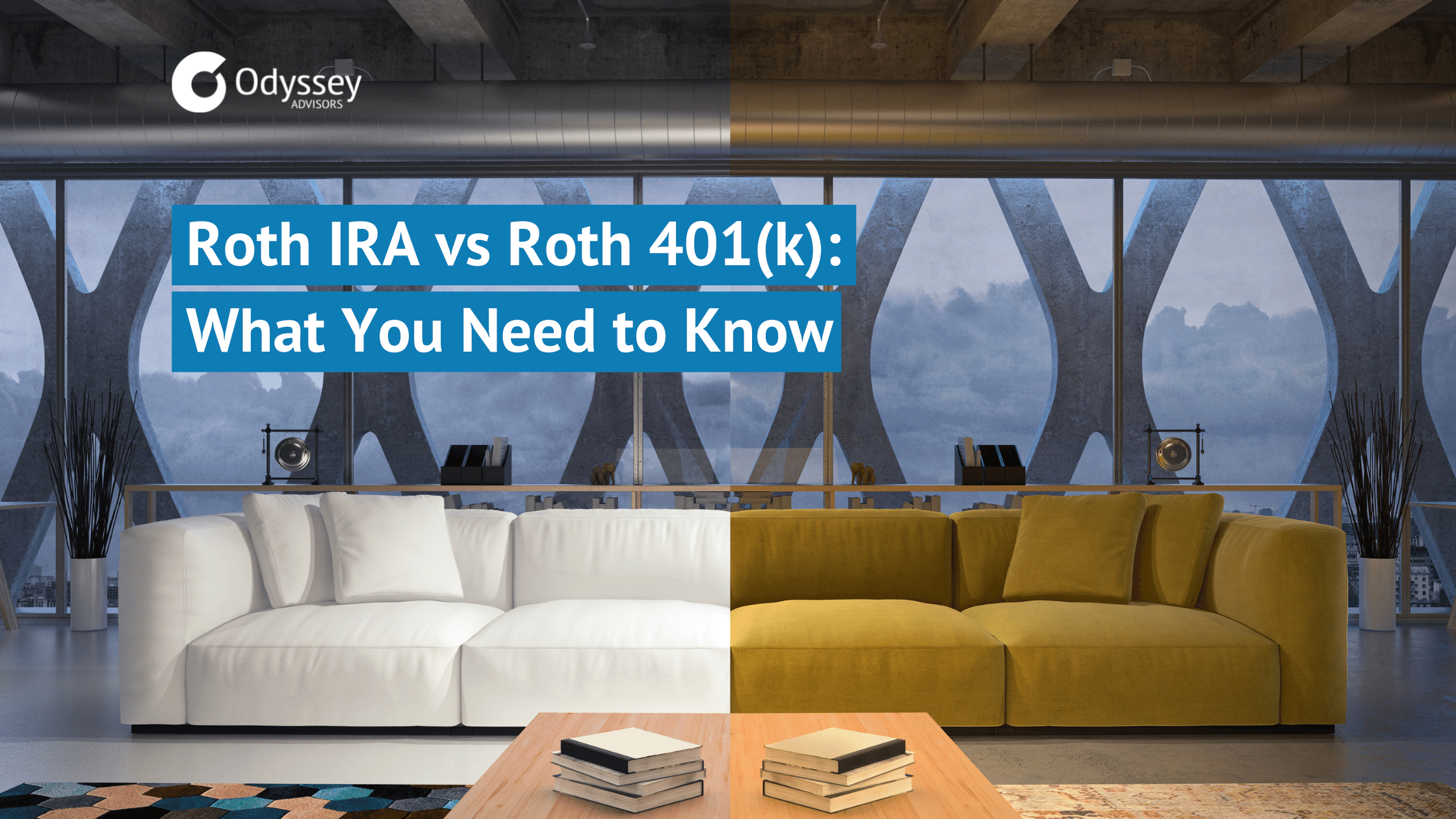Roth IRA vs Roth 401(k): What You Need to Know
March 7, 2022|Samantha Schneider

Bottom Line Up Front
- Roth plans allow you to make contributions after taxes have been taken out so you will receive tax-free withdrawals when you retire.
- A Roth IRA is held by an individual, has an income limit, makes early withdrawals easier, and the investment options are nearly unlimited.
- A Roth 401(k) is offered through an employer’s 401(k) plan, does not have an income limit, has higher contribution limits, and allows employers to make matching contributions.
By now, most of us know the importance of contributing to a retirement account. But with so many accounts available, the tasks of deciding where to start can be daunting. Roth retirement plans are a great way to contribute towards retirement if you expect to be earning more in retirement than you are currently – by paying taxes now, you can potentially pay a lower share of taxes than if you had to pay once you started withdrawing in retirement.
Did you know there are two different ways to contribute to a Roth account? Many employers have now started setting up a Roth 401(k) option within the 401(k) Plan, and you’re eligible to contribute to a Roth IRA if you make less than $144k annually (for single taxpayers). Curious to learn which one might be the right decision for you? Read on to find out the major differences between these two plans:
Roth IRA vs Roth 401(k) Comparison Chart
| Roth 401(k) | Roth IRA | |
| Taxes | Taxed before contribution. Earnings are “tax-free” as long as withdrawals meet the criteria | Taxed before contribution. Earnings are “tax-free” as long as the account has been open for at least 5 years and you meet other criteria |
| Can you withdraw before age 59 ½? | You’ll pay tax and a 10% penalty on the earnings portion of the withdrawal, but not the contribution (withdrawals must be prorated between contributions and earnings) | You can withdraw contributions at any time without taxes or penalties; you can withdraw contributions/earnings penalty-free if the account is at least 5 years old and you’re buying your first house, incurring costs for childbirth, or become permanently disabled |
| Required Minimum Distribution | Begins at age 72 {see blog post} | None required |
| Who owns it? | Employers set up 401k plans | IRAs are held by the individual |
| How much can you contribute? | Up to $20,500 in 2022, plus $6,500 in “catch-up” contributions for those who are at least age 50 (with employer match, the limit is $61,000 or 100% of your salary) | Up to $6,000 plus $1,000 in “catch-up” contributions if you earn less than $129k. Contributions are phased out with earnings between $129k and $144k, and no contributions can be made if you earn over $144k ($204k-$214k for married filing jointly) |
| Investment options | Generally a broad mix of investment options as chosen by the employer/plan sponsor | Nearly unlimited. It ultimately depends upon the chosen IRA custodian or investment provider. |
| Loans allowed? | Yes | No |
| Rollovers allowed? | Yes | Yes |
Looking to compare other plans? Check out how a 401(k) compares to a SIMPLE IRA plan.
Can I Have a Roth IRA and Roth 401(k)?
Yes, you can have both if your employer offers a Roth 401(k). If you are already taking full advantage of your Roth 401(k) and looking to increase your contributions, you can open a Roth IRA to supplement your current retirement plan. Make sure to look at the income limits and phase-out ranges based on your tax filing status to adjust your Roth IRA contributions accordingly.
Your tax advisor can also help you make the best decision based on your personal circumstances.
The Bottom Line
Both plans have their advantages and there’s no right answer to which plan is better than the other, but it is possible that one or both of these options are the right choice for you. By paying taxes before you contribute to your retirement account, you can potentially save significantly on your tax obligations later in life.

About The Author Before coming to Odyssey Advisors, Samantha spent 8 years as a high school math teacher, working mostly with students in low-income, at-risk communities. She users her education background to make sure clients understand the often complex world of retirement benefits...
More Insights From This author





